If a mod happens to read this bit, could/can you fix the autocredit? Thanks in advance.
Credits go to FeiGe3'sDC-10-30CF and GalacticaAsia'sDC-10-30
Thank you to SimpleplanesJP11 for the thumbnail screenshots and for helping smooth out the stripes on the tail.
About the McDonnell Douglas DC-10 & -30/CF variant
The McDonnell Douglas DC-10 is an American trijet wide-body aircraft manufactured by McDonnell Douglas. The DC-10 was intended to succeed the DC-8 for long-range flights. The first variant, the DC-10-10 first flew on August 29, 1970 and was introduced on August 5, 1971 by American Airlines.
The trijet has two turbofans on underwing pylons and a third one at the base of the vertical stabilizer. The twin-aisle layout has a typical seating for 270 in two classes. The original DC-10-10 had a 3,500 nmi/6,500 km range for transcontinental flights. The DC-10-15 had more powerful engines for hot and high airports. The DC-10-30 and -40 models hand larger wingspans and a third main landing gear leg to support higher weights. Each had intercontinental ranges of up to 5,200 nmi/9,600 km. The KC-10 Extender, built off the DC-10-30 airframe is a U.S. Air Force tanker.
Production ended in 1989, with 386 delivered to airlines along with 60 KC-10 tanker aircraft. The DC-10 outsold the similar Lockheed L-1011 TriStar. It was succeeded by the lengthened, heavier McDonnell Douglas MD-11. After merging with McDonnell Douglas in 1997, Boeing upgraded many in-service DC-10s as the MD-10 with a glass cockpit that eliminated the need for a flight engineer. In February 2014, the DC-10 made its last commercial passenger flight with Biman Bangladesh. The aircraft continues to operate in limited capacity for some cargo carriers such as TAB Cargo, and as an aerial refueler operated by Omega Air Refueling. Others have been converted for aerial firefighting and even a 'flying hospital' for Orbis International.

The cockpit of a Omni Air International DC-10-30 (Registration: N810AX) at Hartsfield–Jackson Atlanta International Airport (IATA: ATL/ICAO: KATL) on March 21st, 2009
The DC-10-30 was a long-range model of the type and the most common model produced. It was built with General Electric CF6-50 turbofan engines, with larger fuel tanks and a larger wingspan to increase range and fuel efficiency, and with a set of rear center landing gear to support the increased weight. A total of 163 were built from 1972 to 1988 and delivered to 38 different customers. The model was first delivered to KLM and Swissair on November 21, 1972, and first introduced in service on December 15, 1972, by the latter.

The DC-10-30 prototype (Registration: N1339U) painted in the McDonnell Douglas House Livery at Long Beach Airport (ICAO: KLGB/IATA: LGB) on June 23rd, 1982

The prototype N1339U after having been delivered to KLM with registration changed to PH-DTA at Amsterdam Schiphol Airport (ICAO: EHAM/IATA: AMS) on July 10th, 1976.

The first DC-10-30 to enter commercial service with customer Swissair (Registration: HB-IHA) at Zurich Airport (ICAO: LSZH/IATA: ZRH) on August 9th, 1980.
The DC-10-30'CF', or convertible freighter is as the name implies, a variant of the -30 able to be converted between passenger and freighter variants, not unlike Combi variant aircraft. The first deliveries were to Overseas National Airways and Trans International Airlines in 1973. A total of 27 were built.
DC-10-30 Specs
Length: 181 ft 7.2 in / 55.35 m
Height: 57 ft 7 in / 17.55 m
Wingspan: 165 ft 4 in / 50.39 m
Type Designation
ICAO: DC10
IATA: D1M

The cabin of a Northwest Airlines DC-10-30 (Registration: N237NW) at Amsterdam Schiphol Airport on October 19th, 2006.
About Martinair
IATA Code: MP
ICAO Code: MPH
Callsign: MARTINAIR
Primary Hub & Headquarters: Amsterdam Schiphol Airport
Years Active: 1958-Present (Passenger Flights: 1958-2011)

Martinair's Current Logo

A Martinair Convair 640, PH-CGD, at Liverpool John Lennon Airport (IATA: LPL/ICAO: EGGP) on October 25th, 1967 wearingthe old Martinair livery.

A Martinair Douglas DC-8-55CF PH-MBH at Amsterdam Airport Schiphol in November 1974. In December of that same year, this aircraft, operating as a chartered Garuda Indonesia Flight, Flight 138 was en route to Jeddah carrying 182 passengers, all of whom were Hajj pilgrims traveling to Mecca, crashed on approach to a stopover in Sri Lanka, killing all 191 occupants, earning the dreadful title as the deadliest crash for Martinair and the deadliest crash in Sri Lankan history.

A Martinair Cargo 747-412(BCF) (Registration: PH-MPS) at Arturo Merino Benítez International Airport (IATA: SCL / ICAO: SCEL) on July 21st, 2024
Martinair is a Dutch cargo airline headquartered and based at Amsterdam Airport Schiphol and serves as a subsidiary of Air France–KLM. The airline was founded in 1958 by Martin Schröder, serving as its namesake. Having ceased passenger operations in 2011, Martinair has since has operated entirely as a cargo airline.
On 24 May 1958, the airline was founded as Martin's Air Charter by Martin Schröder and John Block, with one aircraft, a de Havilland Dove, along with five employees.

The single De Havilland Dove, PH-VLC, operating for what was then Martin's Air Charter at Groningen Airport Eelde (IATA: GRQ / ICAO: EHGG) sometime in the early 1960s

Martinair Founder Johan Martin Schröder.
13 May 1931 – 2 October 2024.
In 1963, Schröder sold 49% of the company to four shareholders. KLM would later purchase the 50+% Martin owned, buying him out. The name was changed to Martinair Holland in 1966 to reflect the Dutch roots of the company. A healthy boost came in 1967 with the opening of business to the United States. Martinair then became an all jet-powered airline in 1971. In 1991, the first aircraft using the Martinair Cargo name was introduced, and Holland was dropped from all aircraft. Martinair president and CEO Martin Schröder, who received the Tony Jannus Award in 1995 for his contributions to commercial aviation, retired in 1998.
In June 2007, Martinair announced that it wanted one shareholder, preferably KLM, and in 2008 permission was obtained from the European Commission. The transfer of remaining shares took place on 31 December 2008. In November 2007, Martinair ceased its short-haul operations to concentrate on its cargo activities and intercontinental flights. In October of 2011, Martinair ceased passenger service, which it had operated since its founding in 1958. Martinair had passenger service throughout Europe, the Americas, Asia, and Africa from Amsterdam. The last passenger flight took place on 31 October 2011. Since then, the company has continued to operate cargo flights around the world. The company currently operates the 747-400F for cargo operations but plans to replace them with the Airbus A350F.
Martinair Flight 495: Into the Downpour

The accident aircraft (Registration: PH-MBN) at Faro Airport (ICAO: LPFR/IATA: FAO) in 1985
PART 1: THE FLIGHT
On the morning of the 21st of December, 1992, a 17 year old McDonnell Douglas DC-10-30CF registered PH-MBN and operating as Martinair Flight 495 is preparing to take off from Amsterdam Schiphol Airport in the Netherlands to Faro Airport in Portugal. The aircraft is nicknamed ‘Anthony Ruys’ after one of the airline's former commissioners, and was delivered to the company on November 26th, 1975. The aircraft had been previously leased to three different Asian airlines, including Garuda Indonesia and Singapore Airlines before being returned to Martinair, where earlier that year it was sold to the Royal Netherlands Air Force for a planned conversion to a KC-10. For some time however, it was still being used for passenger flights. Onboard Flight 495 are 340 people. 327 passengers, 10 flight attendants, and 3 pilots. Most of the passengers are vacationers from the Netherlands traveling to the southern coast of Portugal to escape the frigid cold of the Dutch winter.
In the flight deck is 56 year old Captain and DC-10 flight instructor, H. Willem van Staveren with 14,441 hours of flying time, 31 year old First Officer Ronald J. H. Clemenkowff with 2,288 flight hours, 1,787 of them on the DC-10, and 29 year old Flight engineer Gary W. Glans with 7,540 flight hours, 1,700 of which were on the DC-10. During the cockpit briefing the pilots are briefed on ongoing bad weather at Faro Airport with the possibility of thunderstorms. This however was very typical for this time of year, and the aircraft and flight crew flew the route regularly. Just before the scheduled departure time, the flight was delayed for a period of 40 minutes due to a mechanical issue with the No.2 engine (the tail mounted engine on tri-jets) thrust reverser. Despite the issue not being fixed, the aircraft was given the all clear and at 04:52UTC/5:52AM Local Time, Flight 495 takes off for Portugal.
After takeoff, the flight proceeded normally according to the flight plan, and Flight 495 flies the two and a half hour route without incident. During the second half of the flight, F.O. Clemenkowff was the pilot flying and Captain Staveren acted at pilot monitoring. At about 06:55UTC, Clemenkowff conducted the crew briefing for the approach. Because it was raining at the airport, the captain recommended that the first officer make a landing that was, as per his words,
“Not too soft… you have to make it a positive touchdown."
At 07:01UTC, the captain and first officer reviewed the procedures and facilities for the approach at Faro. They noted that the runway at Faro did not have an approach-light system and that the very high frequency omnidirectional radio range (VOR) approach was not aligned with the runway. Captain Staveren informed F.O. Clemenkowff that they needed at least 6,562 feet/2,000 meters visibility for the VOR approach. Two minutes later at 7:03UTC, the crew contacted Lisbon Control Center and requested a descent. The flight was cleared down to FL 230. After obtaining the weather report for Faro, the captain stated that if a landing in Faro was not possible, they would divert to Lisbon Airport (ICAO: LPPT/IATA: LIS).
The weather around Faro is now worsening, with a large thunderstorm in the vicinity of the airport which is accompanied by heavy rain, strong windshear, and low clouds. At 7:09UTC, the flight was cleared to descend to FL70, and the crew was told to contact Faro Approach Control, which the crew acknowledged. The crew then contacted Faro Approach Control and reported
descending to FL70. Faro Approach Control then provided landing instructions and the current weather conditions to the accident crew. The crew was informed that winds were 150 degrees at 18 knots, and visibility 8,203 feet/2,500 meters.
At 7:19UTC, the aircraft is now on approach to Faro. During the approach, the aircraft begins to encounter strong turbulence. With the aircraft now flying through light to moderate turbulence, the captain warns of the bad weather to ensure that the cabin and galley are secured. At 7:20UTC, the accident flight was cleared to descend to 4000 ft/1220m. Four minutes later, the flight was cleared down to 3000 ft/915m. At 07:26UTC, the crew reports leaving 4000ft/1220m for 3000ft/915m. Faro Approach Control then cleared the flight to descend to 610 meters 2000ft/610m. Three minutes later, Faro Approach Control instructed the crew to report when the aircraft was at minimums or when the runway was in sight and informed the flight crew that the runway was flooded.
The weather is even worse now, with it being dark outside due to the ongoing storm. At an altitude of 1000ft/304 m and a speed of 140 knots, the approach becomes unstable and the aircraft began to oscillate. At 07:32, Faro Approach Control asked the crew if they had the runway lights in sight. The crew reported the lights in sight. Faro Approach Control then cleared the flight for Runway 11 and told the crew that the wind was from 150 degrees and gusting to 20 knots. As the oscillations continue, the autopilot is switched from Command Mode (CMD), which gives the autopilot full control of the aircraft to Control Wheel Steering (CWS), which puts the pilots into partial manual control.
At 07:32UTC, the captain warned the first officer that the speed was low. The first officer then asked for “windshield anti-ice", as he stated he could not see anything. At 07:33UTC the captain warned the first officer that they were now a bit low, which was acknowledged by the first officer. Two seconds later, the autothrottle increased power to 102 percent and the aircraft leveled off with the airspeed stabilized. The autopilot was then switched from CWS mode to manual. A few seconds later, the airspeed began decreasing and fell below the approach reference speed. The throttles were now at 40 percent power for landing. About four seconds before contacting the runway, the captain trimmed the elevator to pitch up and increased the throttles. The radio altimeter audio or 'kettle tone' alerted that the aircraft was descending through 50ft/15m.
At 07:33UTC/8:33AM Local Time, the aircraft landed on Runway 11 well before the threshold. The first contact with the runway was made by the right main landing gear as the aircraft touched down on the far left side of Runway 11. The right main gear lands with a descent rate of -900ft/274m per minute and a vertical speed of 126 knots. This was beyond the structural limits of the aircraft, and the right main landing gear collapsed, causing the right engine and right wing tip to contact the runway. The right wing separated from the aircraft, which continued to slide along the runway for a short distance before veering off to the right, across the centerline, and off the runway into the grass.
The aircraft comes to rest 3600ft/1100m from the Runway 11 threshold and 328ft/100m right of the centerline, where it splits into two main pieces. The severed right wing causes the starboard fuel tank to rupture and ignite, and the aircraft bursts into a massive fire. Of the 340 occupants, 106 receive varying ranges of injury from minor to life threatening. 284 people, including the three pilots survive, yet tragically, 56 perish in the crash.

The still smoking wreckage of Flight 495

The nose section of Flight 495

The inside of Flight 495's cockpit after the accident

Another angle of the wreckage
PT 2: TWO SIDES TO THE STORY: COVERUP AND LIES
Hold on a minute there. Should put this here before you go any further. Now you might think that this is the end of the story, but really, we're only at the halfway point. So dear reader, grab a drink of choice, get comfy, and buckle the f**k up, because things are about to get wild.
Now this was a pretty big loss for loss for Dutch aviation given that it was the second major disaster to occur to the Dutch as just two months earlier, El Al Flight 1862 crashed into an apartment building in Amsterdam following the separation of two of its engines and a subsequent loss of control, killing all four aboard and injuring 39 on the ground with another 26 dead. Given this, Martinair Flight 495, despite being deadlier, received less media attention. Despite this, both Portuguese and Dutch aviation authorities launched separate investigations.
It was quickly deduced that during its final approach, Flight 495 flew through two microbursts, leading to the sudden drops in speed and increased descent rate. For those unaware, a microburst or downburst is a meteorological phenomena in which a storm produces a sudden and strong downward column of air with wind speeds often exceeding 100mph/161kmh. This air then disperses radially in all directions. Microbursts are major hazards for aviation and have been responsible for multiple fatal accidents, such as the crash of Delta Airlines Flight 191.
However, the microbursts were not the sole cause of the accident. According to the Portuguese aviation authorities, the causes of the accident were the high sink rate in the last phase of the approach, the hard landing on the right landing gear which exceeded the structural limitations of the aircraft, and the transverse wind during the final approach and landing which exceeded the design limits of the landing gear given the flooded condition of the runway. In addition, the Portuguese report put more blame on the pilots.
According to Dutch aviation authorities, the causes of the accident were contributed to a sudden and unexpected variation in wind direction and speed in the last phase of the approach, and a high descent speed and extreme lateral displacement which caused an excessive loading of the right landing gear, which exceeded the structural limitations of the aircraft. Despite the Portuguese findings, the Dutch report put little to no blame on the pilots and firmly stuck to the windshear story.
These two reports would be at odds with each other for almost 20 years, with the public doubting and questioning the causes of the crash. US aviation authorities who also participated in the investigation blamed Dutch authorities for failing to investigate the causes properly. In 2011, at the request of relatives of victims of the accident, a new, independent investigation was launched and published in a Dutch newspaper. The investigation was lead by a Dutch aviation expert, Harry Horlings, who analyzed data from both black boxes. The independent investigation led to significantly different findings. According to the new investigation, there were several moments where the pilots should have aborted the landing and performed a go around. Additionally, because the runway was flooded contributed to the unstable landing, causing the aircraft to veer on the ground. The pilots also did not properly correct and adjust to windshear, flew the aircraft too slow in windshear conditions, and made errors using the autopilot. It was also pointed out that the official report was missing crucial last seconds, and that data may have been altered.
The Dutch Safety Board stated that it was unable to respond because the council of the safety board had not been able to view and assess the new report. Attorney Jan Willem Koeleman, who assisted some of the surviving relatives, announced that he would request Martinair to recognize liability and pay additional compensation. The case against Martinair, which had since become part of KLM, finally served on January 13th, 2014 in Amsterdam. On February 26, 2014, the court rendered judgment, ruling that additional damages were not necessary.
The case against the State of the Netherlands served on January 20th, 2014 in Hague. On the same day on which the District Court ruled in Amsterdam, February 26th 2014, a decision was also made by means of an interlocutory judgment, or "a judgement that does not settle all of the issues of a case and where the further action by the court is needed to settle the controversy". Unlike the court in Amsterdam, the court in Hague deemed further investigation necessary and wished to hear from aviation experts. Six years later, in January of 2020, the District Court of the Hague ruled that the Dutch state was partly responsible for the accident.
Martinair 495 Wiki Page
CVR Transcript
CVR Recording+Animation
Video Analysis
Aviation Safety Network Entry
Flight Safety Foundation Report
Portuguese Final Report
Newspaper Article on Court Ruling
Specifications
Spotlights
- RicardoACE 3.0 years ago
- Inuyasha8215 1.9 years ago
- Aarav 3.0 years ago
- xNotDumb 3.0 years ago
- Brololxd 2.9 years ago
- TheFlightGuySP 3.0 years ago
General Characteristics
- Successors 8 airplane(s) +70 bonus
- Created On Windows
- Wingspan 165.4ft (50.4m)
- Length 181.7ft (55.4m)
- Height 59.0ft (18.0m)
- Empty Weight N/A
- Loaded Weight 128,711lbs (58,382kg)
Performance
- Power/Weight Ratio 0.916
- Wing Loading 27.2lbs/ft2 (133.0kg/m2)
- Wing Area 4,724.7ft2 (438.9m2)
- Drag Points 38384
Parts
- Number of Parts 817
- Control Surfaces 11
- Performance Cost 3,857

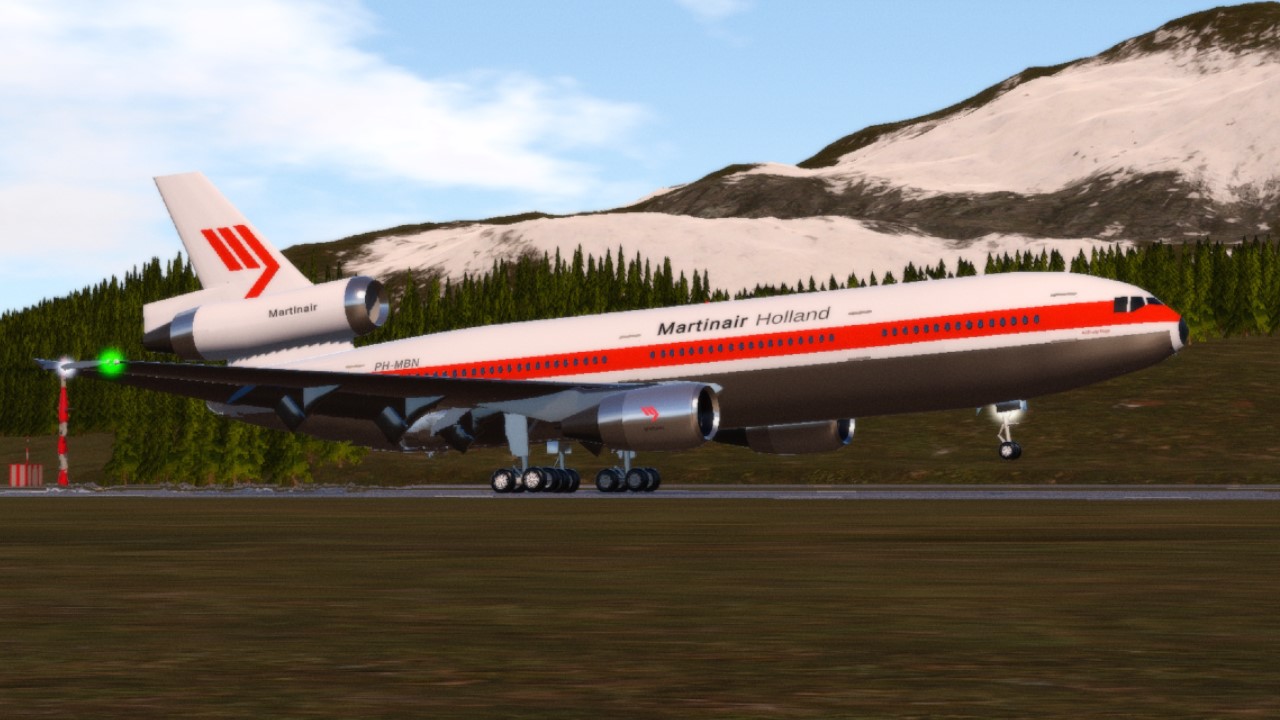
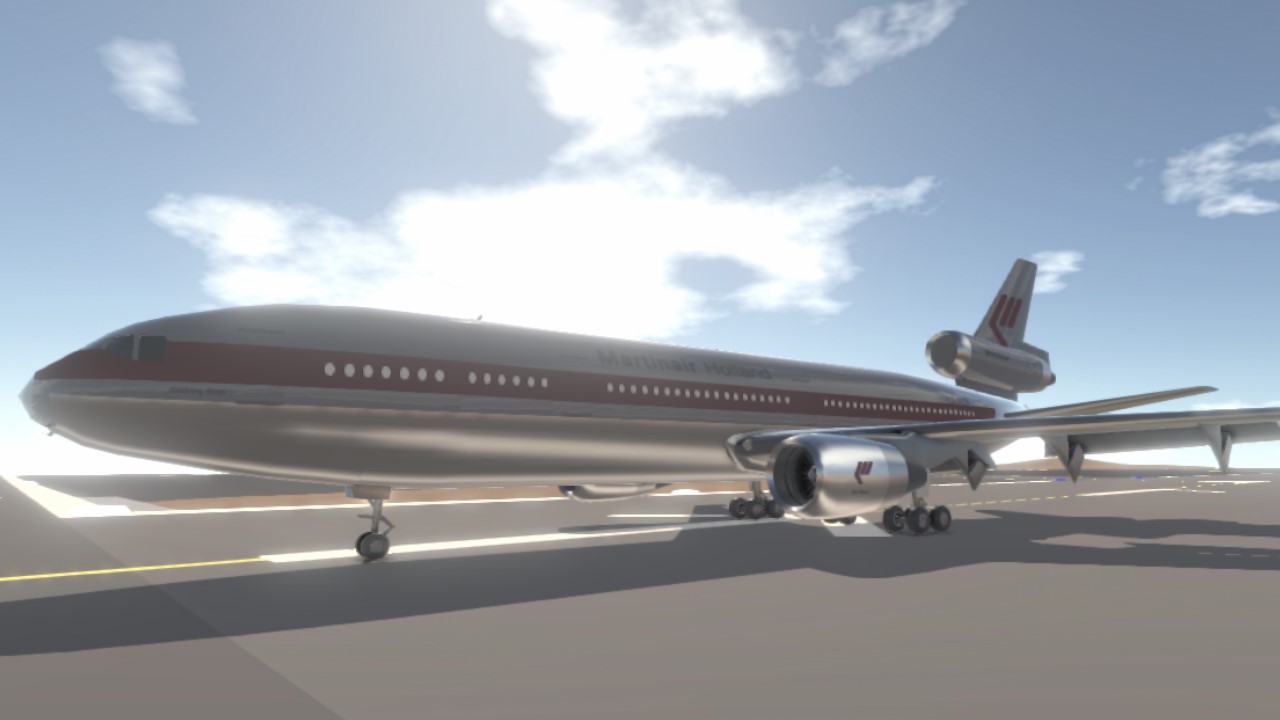
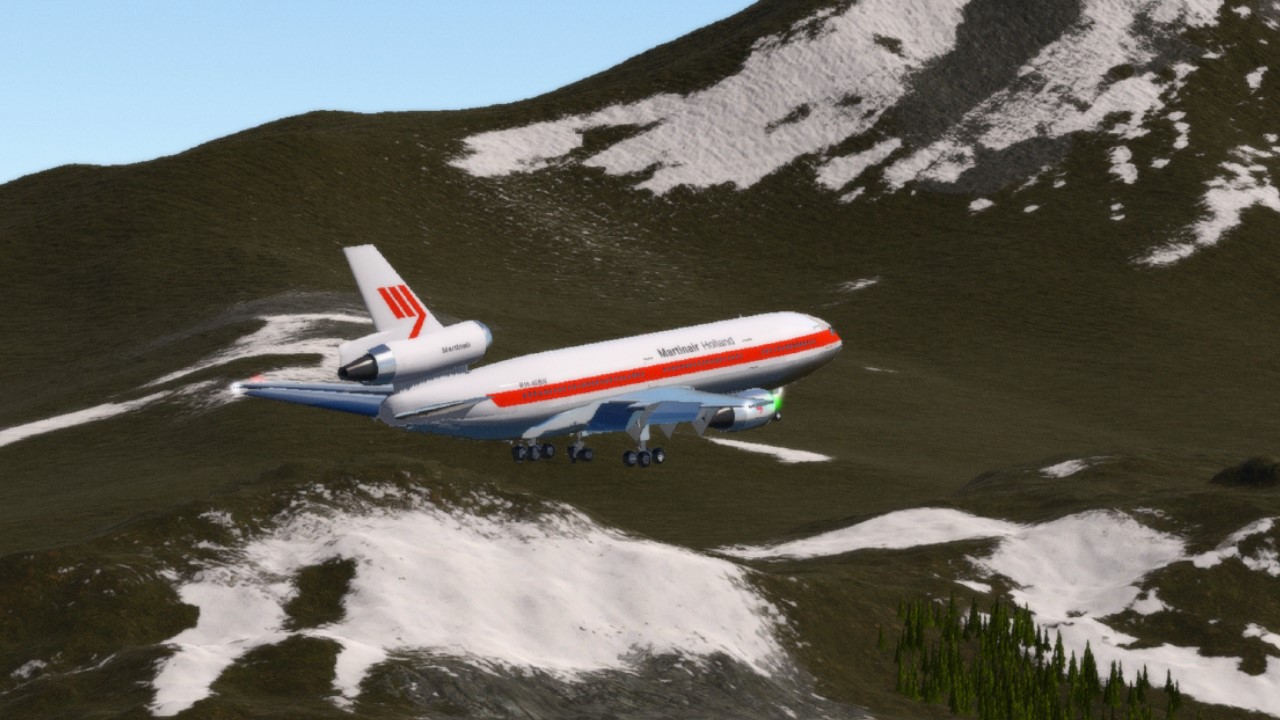
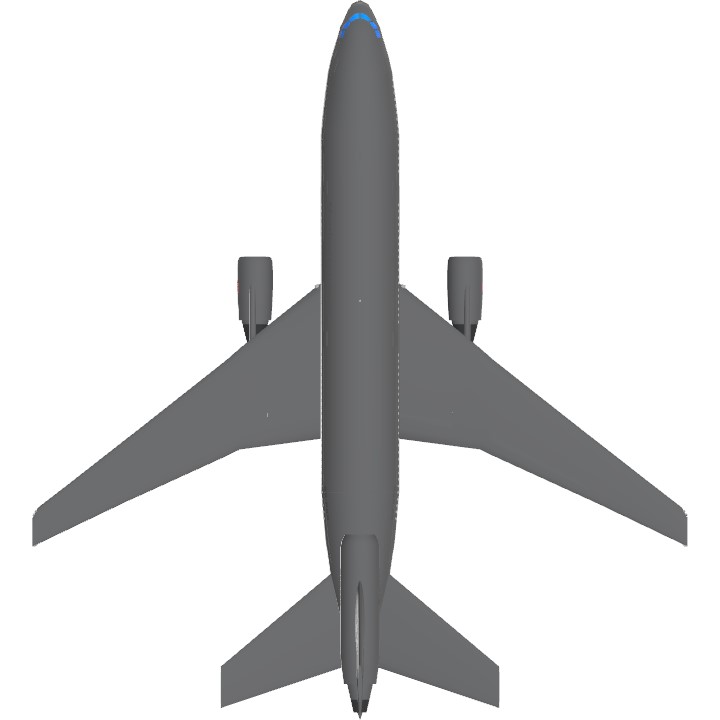
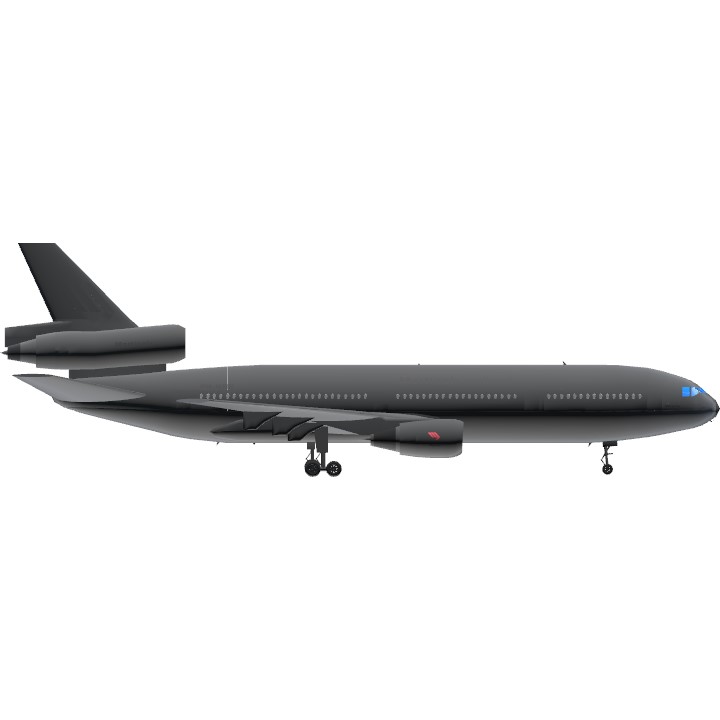
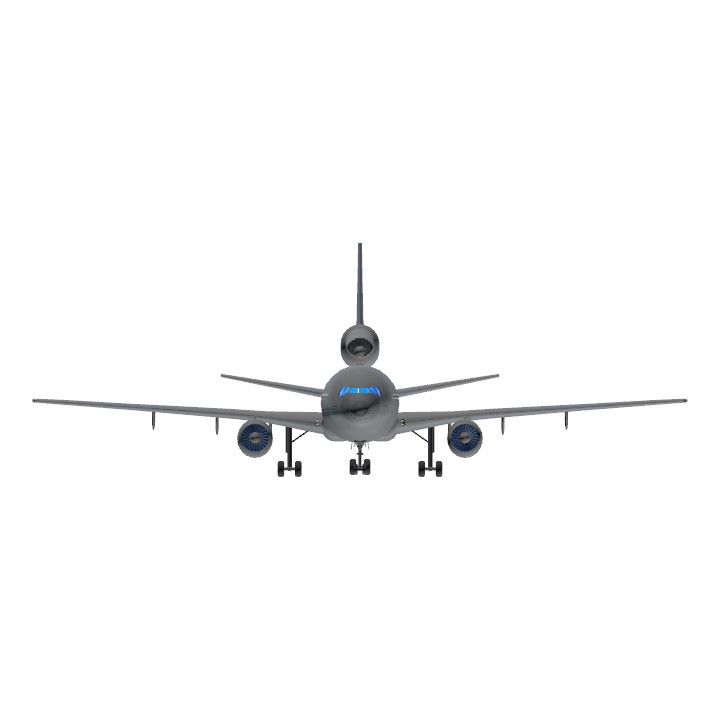
Comments Link
I ain't care about 817 pts lol
Requested Tags: @ArrayDenalov @SimpleplanesJP11 @DatRoadTrainGuy19
Requested Tags: @JacksEpicGamingYT @AlbertanPlaneMaker @TheFlightGuySP
Original Creator Tags: @FeiGe3 @GalacticaAsia
@SimpleplanesJP11 oh wait I didn’t even realise that download buttons had different colours lol
@HololiveFan
Honestly based
💀💀
@AlbertanPlaneMaker
Ah, well RIP mobile users.
@SimpleplanesJP11
Is that a good thing?
Orange download button :D